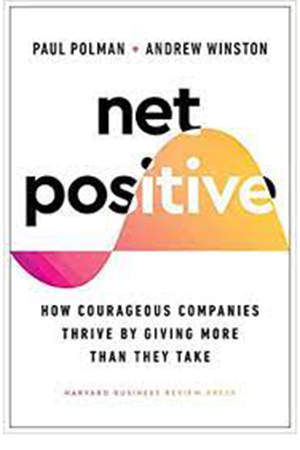Net Positive: taking sustainability a step farther
Net Positive by Paul Polman has asserted itself as a must-read. Pulling no punches, Polman warns that the whole system will collapse if companies don’t tackle challenges such as climate change and inequality head on. Facing these challenges was his mission during his 10 years at the helm of Unilever.
Yes, Paul Polman uses the term “collapse.” Social expectations towards businesses have changed more in the past two years than in the past 20, with growing awareness of climate change, and racial and other inequalities, not to mention the Covid-19 crisis. A number of organizations, yours included perhaps, may already be on the path towards sustainability, but the scale and pace of the movement need to be stepped up.
Drawing from his experience at Unilever, Polman outlines a strategy to make your organization “net positive,” one that “improves well-being for everyone it impacts and at all scales – every product, every operation, every region and country, and for every stakeholder, including employees, suppliers, communities, customers and even future generations and the planet itself.”

Net Positive: How Courageous Companies Thrive by Giving More Than They Take, by Andrew Winston and Paul Polman, (Harvard Business Review Press, 2021).
No. 1: Set the highest possible standards
So what should you be aiming for? The idea is not to just do business in a “less bad” way, by, for example, reducing your carbon emissions. You should make zero not a goal but a crossing point: Aim for a positive contribution, say, eliminating more carbon than you produce. Buying credits to offset emissions won’t cut it. Neither can you pat yourself on the back for using 100 percent renewables in your own operations if your suppliers are running on fossil fuels. You have to take full ownership for all of the repercussions of your company’s business, even when they’re seemingly out of your direct control. For instance, the lion’s share of many sectors’ carbon footprint is in supply chains or the consumer-use phase.
An example of the latter would be the use of hot water to wash clothes or dishes or bodies with cleansing products. One solution is create soaps that are able to clean in cold water. In order to address such downstream emissions, though, you first need to carry out a full life-cycle assessment of the whole business.
Accepting such problems as your own is the first step towards net positive.
© Copyright Business Digest - All rights reserved



